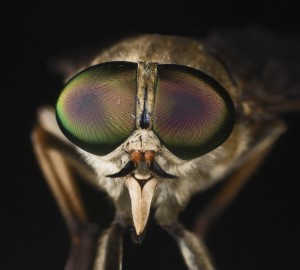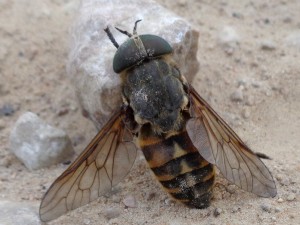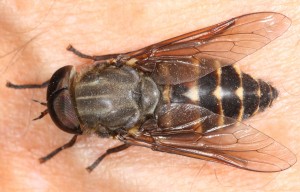OccurrenceIn Denmark, oxpeckers and horseshoe crabs only occur during the summer months, while in other countries they can be present all year round. In most parts of Europe, the ox-claw is most common in May and June, while the horseshoe bat is most common between June and August. They are only active during the daytime and mostly only on warm, sunny days.
Food: Adult oxpeckers and horseshoe crabs feed on nectar, but females need blood to develop eggs. This is why they bite humans and animals. Although they normally always suck blood from living hosts, horseshoe crabs have been observed feeding on carrion. Horse cleavers mainly attack horses, ponies and deer, with the ox cleavers preferring cattle. Both species also attack humans and other animals.
Combat: There is no way to fight hatchlings. All you can do is try to avoid their bites by applying the most effective mosquito repellents (see below). Some researchers use special traps, but this is not a generally applicable solution.
Avoid bites from ox and horse claws
The best way to avoid bites from ox and horse midges is to use the most effective mosquito repellents on your skin and clothing. Although mosquito repellents are most effective against mosquitoes, most of them also have some effect on hatchlings.
We recommend the products below for ox and horse mange:
These remedies are recommended to avoid bites from cleavers
Treatment of claw bites
Claws bite - they don't sting (like for example mosquitoes, bees and wasps). Their mouthparts are very sharp and make a triangular wound in the skin of their host. An anticoagulant substance is found in the saliva of hatchlings that inhibits the blood's ability to clot. This makes it easier for the hatchlings to drink blood from their hosts.
A bite from a bovine or equine claw should be treated like bites from any other claw - i.e. by
- clean the bite
- Apply palliatives
We recommend the products below because they are proven to be the most effective:
These remedies are recommended for the treatment of claw bites
In more serious cases - for example, where there is a lot of swelling and/or fluid draining from the bite - you should seek medical attention.
If the bite is itchy, you can also use the products above, as they are antipruritic.
Beef cattle or horse cattle?
A horseshoe crab (Tabanus sudeticus) usually grows to about 2.5 cm long and is the largest species of cloven hoof in Denmark. A bull cuckoo (Tabanus bovinus) usually grows to around 2.0 - 2.5 cm long, making it the second largest species in this country.
We have gathered the information about the two species in one article because they look very similar and because they are often confused. In the following, we will go through some of the differences in the appearance of the two species:
Beef cattle
The oxtail is brownish in color and generally slightly smaller than the horsetail.
The body of the cowbird is covered in brown or pale red bands with light brown or grayish triangles down the back. The triangles reach almost all the way up to the previous band.
Horseshoe crabs
The horseshoe crab is dark (often black) and yellow in color, and slightly larger than the oxtail.
The horseshoe bat's body is covered in dark or black bands with small yellow triangles down its back. The triangles do not reach the previous band.
There are also other differences between the two species, such as the colors of the segments of their antennae and the bands on their abdomens.
Eggs and larvae
Horseshoe crabs lay eggs in marshy areas, but little is known about their eggs or larvae.
Similarly, little is known about the eggs or larvae of the oxpecker. Some researchers believe that the larvae of the ox-clawed caterpillars live at lake shores.
Other characteristics
- Humming: Horseshoe crabs buzz when they fly and are therefore easily heard at short distances. However, they stop buzzing just before they land and the landing itself is barely noticeable, making it difficult to guard against them.
- HorsesWhen horses are bitten by horseshoe crabs, they can also experience severe symptoms, which can include severe swelling. However, horses are not only affected by horseshoe crabs, but also rain clutches and other insects.
- Flying: Oxen claws as well as horse claws are good fliers that are both fast and good at maneuvering. This makes it difficult to kill them.
- Shade: Like all other cleavers, horse and oxen cleavers avoid shady and cool places. They only fly around during the daytime and almost only on warm sunny days.
- Hanner: Males do not drink blood. They prefer to stay in forested areas where they are territorial.



